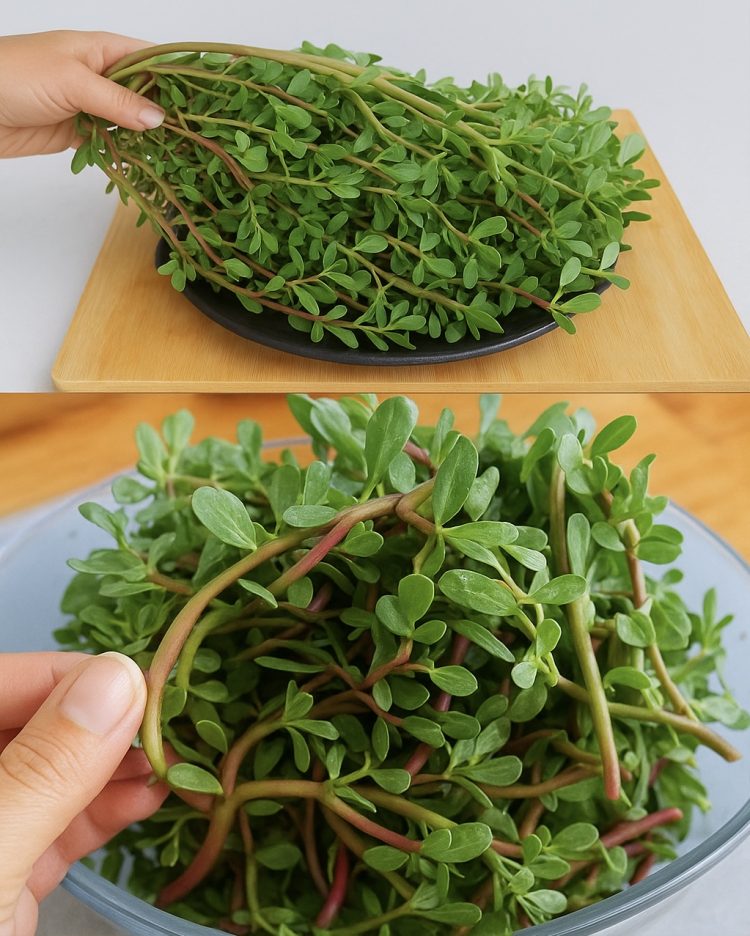Purslane, scientifically known as Portulaca oleracea, is a highly nutritious and versatile plant that has been used for centuries in various culinary and medicinal practices around the world. Despite being considered a weed by some, purslane boasts an impressive array of health benefits and culinary uses. In this article, we will explore how to identify purslane, its nutritional profile, health benefits, and ways to incorporate it into your diet.
Identifying Purslane:
Purslane is a succulent plant with smooth, reddish stems and thick, fleshy leaves. It typically grows close to the ground and forms a sprawling mat-like habit. The leaves are paddle-shaped and arranged alternately along the stems. One distinctive feature of purslane is its small, yellow flowers that bloom during the summer months. Additionally, purslane produces tiny, black seeds contained within small capsules.
Nutritional Profile of Purslane:
Purslane is a nutritional powerhouse, packed with vitamins, minerals, and antioxidants. It is particularly rich in:
Omega-3 Fatty Acids: Purslane contains higher levels of omega-3 fatty acids than most leafy green vegetables, making it a valuable source of these essential nutrients.
Vitamins: Purslane is abundant in vitamins A, C, and E, as well as various B vitamins such as riboflavin, niacin, and folate.
Minerals: Purslane is a good source of minerals including potassium, magnesium, calcium, and iron.
Antioxidants: Purslane contains antioxidants such as beta-carotene, flavonoids, and betalains, which help protect the body against oxidative stress and inflammation.
Health Benefits of Purslane:
Heart Health: The omega-3 fatty acids found in purslane may help reduce the risk of heart disease by lowering blood pressure, reducing inflammation, and improving cholesterol levels.
Immune Support: The vitamins and antioxidants in purslane support a healthy immune system, helping the body fight off infections and diseases.
Digestive Health: Purslane contains dietary fiber, which promotes digestive regularity and may help prevent constipation.
Skin Health: The vitamins and antioxidants in purslane contribute to healthy skin by protecting against damage from free radicals and promoting collagen production.
Weight Management: Purslane is low in calories but high in nutrients, making it a great addition to a weight-loss diet. Its fiber content also helps promote feelings of fullness and satiety.
Purslane: A Nutrient-Rich Plant with Numerous Benefits
Identification and Characteristics
Purslane is a low-growing succulent plant with smooth, reddish stems and thick, fleshy leaves that are arranged alternately along the stem. Its leaves are paddle-shaped and vary in color from green to reddish-green. Purslane produces small, yellow flowers that bloom during the summer months. These flowers typically have five petals and can be found at the tips of the stems.
One of the distinguishing features of purslane is its growth habit. It tends to spread horizontally along the ground, forming dense mats or clusters. This growth pattern allows purslane to thrive in a variety of environments, including gardens, fields, and even cracks in pavement.
Culinary Uses
Purslane has a mild, slightly tangy flavor that is reminiscent of spinach or watercress. It can be enjoyed raw or cooked and is a popular ingredient in salads, soups, stir-fries, and stews. Some common culinary uses for purslane include:
Purslane: A Nutrient-Rich Plant with Numerous Benefits
Purslane Green Smoothie
Ingredients:
1/2 cup fresh purslane leaves and stems
1 ripe banana
1/2 cup spinach (optional for extra greens)
1/2 cup pineapple chunks (fresh or frozen)
1 cup almond milk (or any milk of your choice)
1 tsp honey or maple syrup (optional, for added sweetness)
Instructions:
Add all ingredients to a blender.
Blend until smooth and creamy.
Pour into a glass and enjoy immediately!
Purslane, scientifically known as Portulaca oleracea, is a versatile and nutrient-rich plant that offers a multitude of benefits for health and culinary purposes. Despite being considered a weed by many, purslane has been celebrated in various cultures for centuries for its medicinal properties and culinary uses. This article aims to explore the characteristics of purslane, its health benefits, culinary uses, and how to identify and cultivate it in your garden.
Identification and Characteristics
Purslane is a low-growing succulent plant with smooth, reddish stems and thick, fleshy leaves that are arranged alternately along the stem. Its leaves are paddle-shaped and vary in color from green to reddish-green. Purslane produces small, yellow flowers that bloom during the summer months. These flowers typically have five petals and can be found at the tips of the stems.
One of the distinguishing features of purslane is its growth habit. It tends to spread horizontally along the ground, forming dense mats or clusters. This growth pattern allows purslane to thrive in a variety of environments, including gardens, fields, and even cracks in pavement.
see continuation on next page
